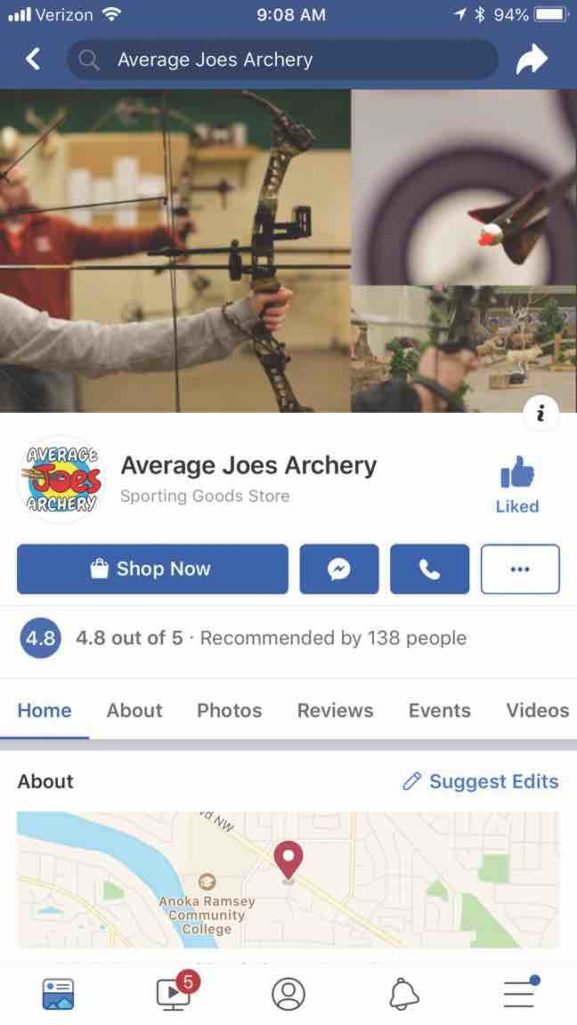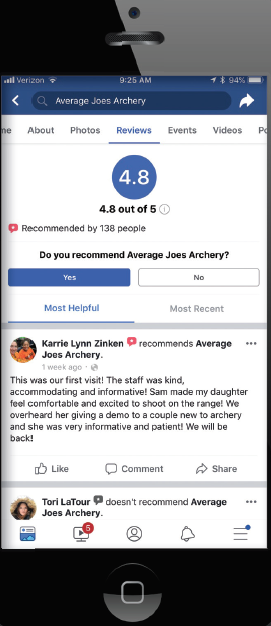Years ago I took a college business class. Our final project was to create a business plan for any kind of business we could dream up. When we presented these plans on the last day of class, one strategy in particular kept coming up as the solution for cheap, effective marketing: word of mouth.
Word of Mouth
Nearly every person in the class, whether they had developed a plan to open a new vegan restaurant or a mall kiosk selling pagers (hey, it was a long time ago), planned on relying on word-of-mouth marketing.
I don’t imagine any of our businesses would have been very successful, and not just because beets and beepers are hard to turn into profitable businesses. Although word of mouth is an extremely powerful form of marketing, it’s hard to organically get enough people talking about your business to make it effective as your sole marketing strategy. Your business has to be pretty extraordinary — in either a good or bad way — to spur people to tell their friends about it.
That said, social media has changed the game quite a bit over the last few years. I still wouldn’t suggest relying entirely on word of mouth, but there are ways to encourage your customers to spread the word about your business on their social media channels.
FB Check-Ins
Facebook offers a Check-In feature that allows users to say where they are or where they’ve been. When someone checks in at a local business, a notification appears in their friends’ newsfeeds.
This is an invaluable feature for small business owners. A blog post on Causely explains it best: “Facebook Check-Ins provide all the information a potential customer would look for — your location, ratings and a link to your Facebook page for more details. If a Check-In is viewed on a mobile device, clicking the map will even bring up driving directions.”
A Check-In goes even further than that — a Facebook Check-In is a way for your customers to recommend your business to their friends, many of whom are probably local, and many of whom likely share your customer’s interests. In fact, that same Causely blog post reports that each FB Check-In is viewed by at least 200 people — that’s a lot of people looking at what amounts to a friend’s endorsement of your business.
Facebook Check-In is tremendously underutilized. Perhaps my experience is unusual, but very few of my friends use the feature at all. The upside to that is when someone does check in at a location, it stands out on my newsfeed — and that means Facebook Check-In is a great opportunity for the enterprising small business owner.
Don’t sit back and wait for people to check in on their own. Encourage your customers to use the Check-In feature by offering incentives to those that do. You could offer discounts or extra range time in exchange for a FB Check-In. Another idea is to take those old-fashioned store punch cards (you know the ones: “Buy 10 cups of coffee and get the 11th one free!”) to the digital world by offering an incentive for every X number of Check-Ins. Your customers will feel like they’re getting something for their loyalty to your shop, all while they’re promoting your shop to their friends.
 Getting Reviews
Getting Reviews
The internet has changed the way people look for businesses to patronize. In the past, if someone were looking for a particular service or retail establishment, they would ask their friends for recommendations. Today, people might still turn to their friends, but they have a new resource for gathering information on services, products and businesses: online reviews.
How important are online reviews? According to eMarketer Retail, they’re pretty important: more than 8 in 10 internet users trust online reviews as much as personal recommendations from friends (per a 2017 BrightLocal survey).
But there’s a caveat: Consumers are well aware that fake reviews exist. Those fake reviews might be positive reviews left by employees or friends of the business (we’ve all seen a review clearly left by the business owner’s mother), or negative reviews left by competitors of the business. Because it can be difficult to decipher which reviews are genuine and which ones are fake, people generally have more confidence in online reviews of a particular business when there are a lot of them. That means the more reviews your business has on, say, Facebook, the more weight people will give those reviews.
The problem is, people generally leave reviews for businesses only when they’ve had either a very good experience or a very bad experience. Obviously, you can work hard to ensure that every customer who enters your archery shop has a standout experience and hope that translates into lots of positive online reviews, but you can — and should — find more active ways to encourage your customers to leave your reviews.
 The first thing to do is simply ask for reviews. One local business I visit has a little card with several review sites listed, including Facebook and Google reviews. At check out, the store employee will ask the customer about their experience that day. This not only gives the store the opportunity to address any customer complaints immediately, but it also serves as a lead in to a request for an online review. It’s a no-pressure request — the employee simply asks for a review and then drops the review-site card into the customer’s bag.
The first thing to do is simply ask for reviews. One local business I visit has a little card with several review sites listed, including Facebook and Google reviews. At check out, the store employee will ask the customer about their experience that day. This not only gives the store the opportunity to address any customer complaints immediately, but it also serves as a lead in to a request for an online review. It’s a no-pressure request — the employee simply asks for a review and then drops the review-site card into the customer’s bag.
This practice does two things: It puts the idea of an online review in the customer’s mind, and the little card serves as reminder after the customer gets home and has more time to actually leave a review.
Of course, you might also consider offering an incentive for online reviews. Another business I visit offers a discount on future service in exchange for an online review. This has the added benefit of encouraging a customer to return in order to claim their discount.
Note that in all cases, the businesses in question ask only for an online review. There’s no pressure on the customer to leave a positive review. Offering an incentive in exchange for a five-star review makes it look like you’re in the habit of buying reviews, and it makes your business a lot less trustworthy. All the positive reviews in the world won’t help you if people don’t believe they’re genuine.
(Got a bad online review? Check out this recent article for tips on how to respond.)
Say Cheese!
Look, I do not pretend to understand our culture’s obsession with selfies. You may not, either. But the reality is, people (especially younger people) love taking pictures of themselves. Combine that with the trend toward “experience retail,” and what do you get?
Selfie booths.
That’s right — selfie booths. These are areas of a retail establishment whose sole purpose is to allow customers to take really good selfies.
For many of us, that sounds ridiculous. This is valuable floor space we’re talking about here, and you may not have the type of customers a selfie booth would appeal to. But even knowing that, a selfie booth may have some value for your business.
In an article on Fundera, Chuck Lepley, vice president of marketing for DIY photo booth app Simple Booth, said, “The experience economy is here. And figuring out how to be a part of it is crucial for every type of business. People love experiences, they love to take photos, and they love to share everything they do. But many businesses lose out because they aren’t able to insert themselves into that social conversation.”
And a New York Times article from May 2017 titled “Step Into Our Selfie Booth and Help Us Build Our Brand” outlines numerous ways that small businesses have integrated selfie booths into their marketing strategy. One business, a vegan restaurant in Toronto called Doomie’s (I guess there’s money to be made from beets after all) turned an unused basement room into a selfie room. As the article explained, “At least half the restaurant’s first-times under the age of 35 visit the selfie room, Mr. De Paul (one of the restaurants owners) said, “On evenings when there is a wait for a table, patrons sometimes while away the time posing and posting.”
Consider that for just a moment: While people wait for a table, they’re busy promoting the restaurant for the owners. For free. Talk about marketing genius.
Think a selfie booth can’t work for your business? Well, the first time I saw a selfie booth at a local business was when I was visiting my county library.
That’s right — the library. Your shop is way hipper than my library. If they can make it work, so can you.
A selfie booth is a great way to appeal to consumers under 35. There are plenty of companies that would be happy to sell you a professional selfie booth, but you don’t need to invest in anything that fancy. The selfie “booth” at my library was simply a cool backdrop with a sign indicating people should take a photo in front of the backdrop and post it on social media with a certain hashtag.
You can easily do the same thing. Think of cool backdrop ideas, and make sure your shop’s name and/or logo are clearly visible. And while selfie booths are more popular among younger consumers, if you’re creative, you might even find a way to get your older customers involved.
If you cater mainly to Baby Boomers and Gen Xers, you could host a contest that makes fun of selfies — an opportunity to see which of your customers can make the best selfie duck face, or a chance for adults to embarrass their teenagers by recreating their selfies. Think outside the (selfie) box. The benefit of doing something like that is that funny photos tend to be more widely shared, which gives your shop a lot more exposure.
Get Insta-Worthy
Facebook may still be the 600-pound gorilla in the room when it comes to social media platforms, but if you’re targeting younger consumers, you need to think about Instagram.
You can — and should — develop your own Instagram marketing strategy to appeal to Millennials and Gen Xers. But if you want your customers to do some marketing for you on the platform, you can’t be, as the kids would say, basic. You have to be “extra.”
Instagram is all about photos and followers. Users want to post cool, unique photos that earn engagement from their followers. If your shop gives customers a way to take cool, unique photos, there’s a good chance those photos will get a lot of looks on Instagram.
Lots of businesses are doing just that, offering over-the-top products and experiences knowing that younger consumers will visit, often just to get an Instagrammable photo.

And those photos can take on a life of their own. Recently, I received a food magazine that had dedicated a whole page to a compilation of Instagram photos of incredible treats available at ice cream shops around the country. There, on the pages of this nationally distributed magazine, were photos taken by ordinary consumers of unusual ice cream sundaes, cones and milkshakes. The magazine got essentially free content, the Instagram users got amazing food photos, and the ice cream shops got incredible exposure — the very definition of a win-win-win.
So think about ways that you can offer Instagrammable opportunities in your shop. That may be unusual targets in your range, or games or contests that appeal to young people. The benefit of thinking about what might make for a cool photo on Instagram is that a cool photo opportunity probably comes from a cool experience — and that’s what a lot of younger consumers want out of a retail visit. Find ways to make your shop look cool on Instagram, and you’ve also most likely found ways to make your shop a lot cooler in real life.
Featured image from iStock






